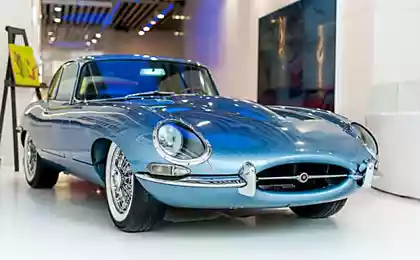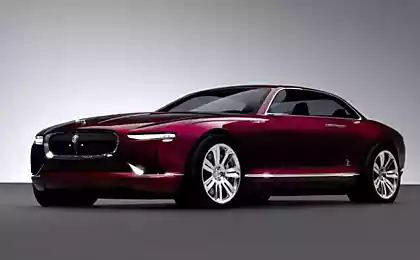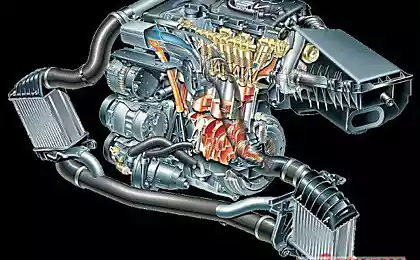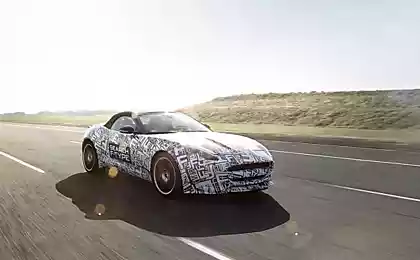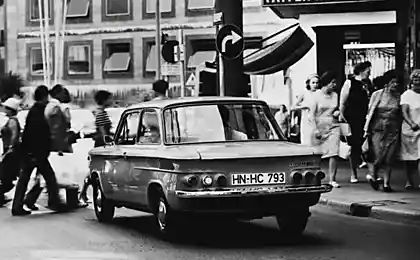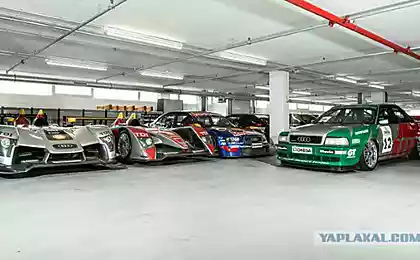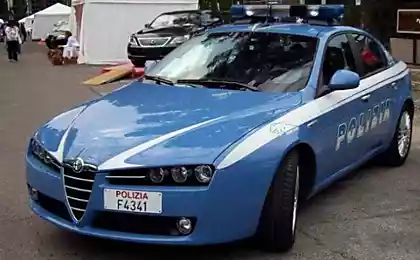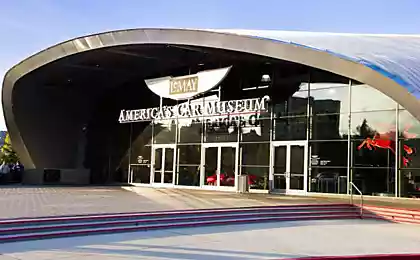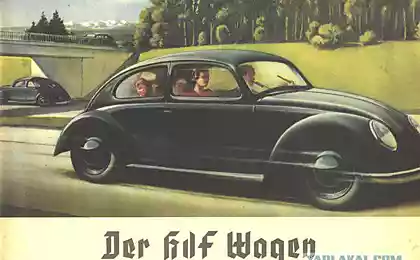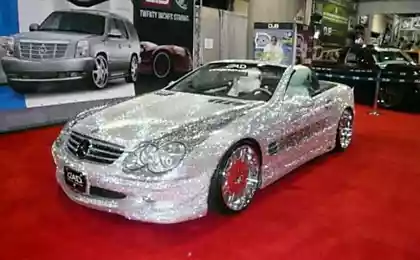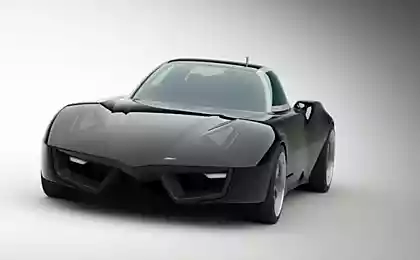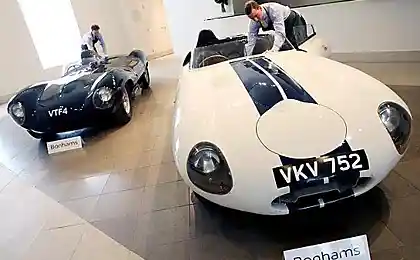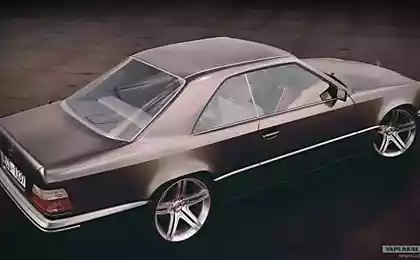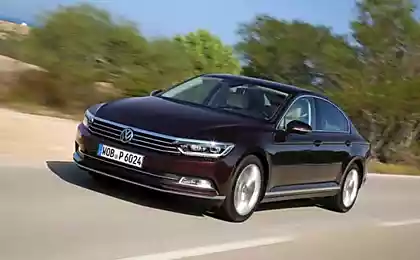217
The most beautiful car in the world
A liter of oil per 100 kilometers of run, almost no ventilation of the cabin, uncomfortable seats, cramped legs and lightly glowing headlights did not stop buyers. The stunning appearance and exciting dynamics forgave everything. Those who wanted to line up, they did not care about these minor shortcomings.
Everyone wanted a Jaguar E-Type. It instantly became the same symbol of the sixties as the Beatles or the miniskirt. The car fell in love at first sight, it is not surprising that it was owned by the most famous people of the time.
Even Enzo Ferrari, who did not like English cars, called the E-Type the most beautiful car in the world.
Talking about the creation of the E-Type, it is impossible to do without mentioning the accident at the 24 Hours of Le Mans in 1955. At that time, the usual safety standards at sports events did not exist. The track remained unchanged for 30 years, and the speed of cars during this time increased from one hundred to three hundred kilometers per hour. Many spectators died.
The D-Type, the predecessor of the E-Type, finished first, but no one wanted it. Jaguar owner William Lyons has disbanded his factory team. Mercedes-Benz refused to participate in the competition for 30 years. Auto racing is banned across Europe. This law is still in effect in Switzerland.
Winning race tracks has always been the best advertisement for Jaguar production models. So much effort and resources were invested in the revolutionary D-type that Sir William could not back down. In the workshops of the company there were many racing "desheks" of varying degrees of readiness. Lyons decides to offer a racing D-type to ordinary buyers. The car costs as much as four Chevrolet Corvettes and only sells 43 cars.
William Lyons does not give up and remakes the D-Type into a glamorous supercar. The car gets a passenger seat, a full windshield with wipers and a light awning. They keep the engine the same. The 250-horsepower engine accelerated the car to a stunning 260 km / h. The model is called Jaguar-XKSS.
But the terrible fire at the Jaguar factory in Browns Lane ruins all plans. Destroyed a lot of ready-made XKSS and components for them. Only 16 cars were sold.
William Lyons decides not to resume production of the model and begins to create a completely new car, using all the experience gained in racing.
Jaguar Chief Designer Malcolm Sayer is working on the project. The former aircraft engineer Bristol Aeroplane Company, which produced combat aircraft, did not like being called a designer, considering himself primarily a specialist in aerodynamics. The first prototype appeared in late 1957 under the symbol E1A (E-type 1 Aluminium). Carrying monocoque of aluminum, 3.8-liter "six" and revolutionary rear suspension.
Before that, Jaguar even used a dependent rear suspension on racing cars, but with increasing speeds, it was less and less suited to pilots. Lyons was convinced that it was impossible to create a new design faster than a month, then engineer Bob Knight developed a new rear suspension in just 27 days. The design was so successful that, with changes, it lasted on Jaguar cars until the 1990s.
The concept of the E1A liked William Lyons, and soon there was a second prototype, already closer to the production model. Jaguar E2A, equipped with a high-powered 3-liter engine with a fuel injection system.
It was based on the Jaguar E-Type.
The 1961 Geneva Motor Show turned into a one-car show – the Jaguar E-type fascinated everyone. The success of the preview for journalists was so stunning that Lyons asked Norman Dewis, the Jaguars' chief tester, to bring the second of the cars in England overnight.
Norman traveled 1,000 miles from Coventry to Geneva in just over 11 hours! To the question of how he managed to do this, he answers simply: “Well, there were no radars in those days...” Now he's in his 90s, and here he is.
Jaguar took the soul of absolutely everything, it is not possible to single out any individual detail or E-type element. In fact, the new sports car remained a variation on the theme of the racing D-type, only slightly combed and ennobled. But an amazing combination of aerodynamic muscular shapes and ideal proportions created an unforgettable image. Eshka, like a Hollywood beauty, fell in love at first sight.
Advanced rear independent suspension and disc brakes at that time were rare, and the 3.8-liter engine produced 265 hp, which provided the car with breathtaking dynamics - 6.9 seconds to a hundred and 241 km / h of top speed. With all this, the E-type with its stunning appearance, as well as exciting dynamics and handling was relatively inexpensive.
The demand for the novelty from Coventry significantly exceeded the supply - the company did not even have to spend money on advertising. And most importantly, to the great joy of William Lyons, the success of the E-type locomotive pulled the sales of other models.
Customers came to the showrooms to look at the unearthly beauty of the “yeshka”, but, having learned how much to wait, they compromised and chose other Jaguars from available ones.
The E-Type became the first affordable supercar and remained a true automotive icon for 14 years. During this time, he got a new engine, automatic box and even an elongated version with an additional child seat row.
More than 70,000 units were sold, making the E-Type the number one mass-produced sports car in Europe. And, half a century later, there was a successor to the most popular Stortkar.
Which was called the F-Type.
Source: ottenki-serogo
Source: /users/1080
Everyone wanted a Jaguar E-Type. It instantly became the same symbol of the sixties as the Beatles or the miniskirt. The car fell in love at first sight, it is not surprising that it was owned by the most famous people of the time.
Even Enzo Ferrari, who did not like English cars, called the E-Type the most beautiful car in the world.
Talking about the creation of the E-Type, it is impossible to do without mentioning the accident at the 24 Hours of Le Mans in 1955. At that time, the usual safety standards at sports events did not exist. The track remained unchanged for 30 years, and the speed of cars during this time increased from one hundred to three hundred kilometers per hour. Many spectators died.
The D-Type, the predecessor of the E-Type, finished first, but no one wanted it. Jaguar owner William Lyons has disbanded his factory team. Mercedes-Benz refused to participate in the competition for 30 years. Auto racing is banned across Europe. This law is still in effect in Switzerland.
Winning race tracks has always been the best advertisement for Jaguar production models. So much effort and resources were invested in the revolutionary D-type that Sir William could not back down. In the workshops of the company there were many racing "desheks" of varying degrees of readiness. Lyons decides to offer a racing D-type to ordinary buyers. The car costs as much as four Chevrolet Corvettes and only sells 43 cars.
William Lyons does not give up and remakes the D-Type into a glamorous supercar. The car gets a passenger seat, a full windshield with wipers and a light awning. They keep the engine the same. The 250-horsepower engine accelerated the car to a stunning 260 km / h. The model is called Jaguar-XKSS.
But the terrible fire at the Jaguar factory in Browns Lane ruins all plans. Destroyed a lot of ready-made XKSS and components for them. Only 16 cars were sold.
William Lyons decides not to resume production of the model and begins to create a completely new car, using all the experience gained in racing.
Jaguar Chief Designer Malcolm Sayer is working on the project. The former aircraft engineer Bristol Aeroplane Company, which produced combat aircraft, did not like being called a designer, considering himself primarily a specialist in aerodynamics. The first prototype appeared in late 1957 under the symbol E1A (E-type 1 Aluminium). Carrying monocoque of aluminum, 3.8-liter "six" and revolutionary rear suspension.
Before that, Jaguar even used a dependent rear suspension on racing cars, but with increasing speeds, it was less and less suited to pilots. Lyons was convinced that it was impossible to create a new design faster than a month, then engineer Bob Knight developed a new rear suspension in just 27 days. The design was so successful that, with changes, it lasted on Jaguar cars until the 1990s.
The concept of the E1A liked William Lyons, and soon there was a second prototype, already closer to the production model. Jaguar E2A, equipped with a high-powered 3-liter engine with a fuel injection system.
It was based on the Jaguar E-Type.
The 1961 Geneva Motor Show turned into a one-car show – the Jaguar E-type fascinated everyone. The success of the preview for journalists was so stunning that Lyons asked Norman Dewis, the Jaguars' chief tester, to bring the second of the cars in England overnight.
Norman traveled 1,000 miles from Coventry to Geneva in just over 11 hours! To the question of how he managed to do this, he answers simply: “Well, there were no radars in those days...” Now he's in his 90s, and here he is.
Jaguar took the soul of absolutely everything, it is not possible to single out any individual detail or E-type element. In fact, the new sports car remained a variation on the theme of the racing D-type, only slightly combed and ennobled. But an amazing combination of aerodynamic muscular shapes and ideal proportions created an unforgettable image. Eshka, like a Hollywood beauty, fell in love at first sight.
Advanced rear independent suspension and disc brakes at that time were rare, and the 3.8-liter engine produced 265 hp, which provided the car with breathtaking dynamics - 6.9 seconds to a hundred and 241 km / h of top speed. With all this, the E-type with its stunning appearance, as well as exciting dynamics and handling was relatively inexpensive.
The demand for the novelty from Coventry significantly exceeded the supply - the company did not even have to spend money on advertising. And most importantly, to the great joy of William Lyons, the success of the E-type locomotive pulled the sales of other models.
Customers came to the showrooms to look at the unearthly beauty of the “yeshka”, but, having learned how much to wait, they compromised and chose other Jaguars from available ones.
The E-Type became the first affordable supercar and remained a true automotive icon for 14 years. During this time, he got a new engine, automatic box and even an elongated version with an additional child seat row.
More than 70,000 units were sold, making the E-Type the number one mass-produced sports car in Europe. And, half a century later, there was a successor to the most popular Stortkar.
Which was called the F-Type.
Source: ottenki-serogo
Source: /users/1080
News in the fight against kilograms—an alternative to bariatric weight loss
Daddy's girl: educational feats and failures

